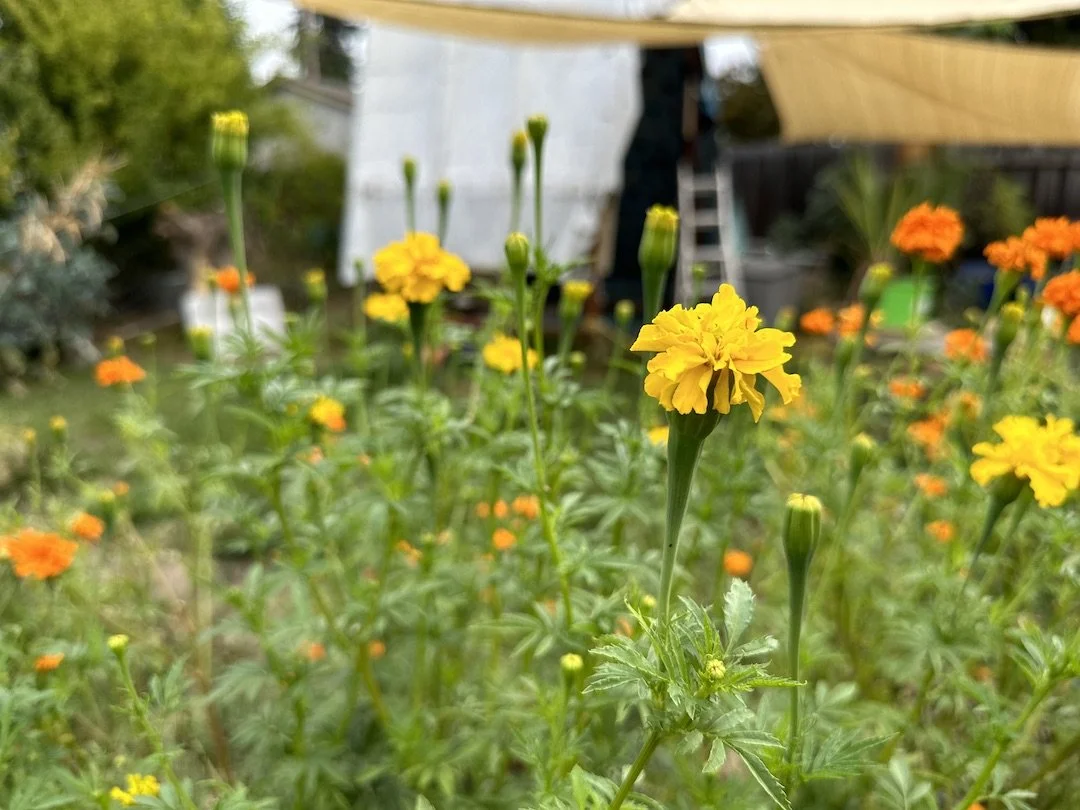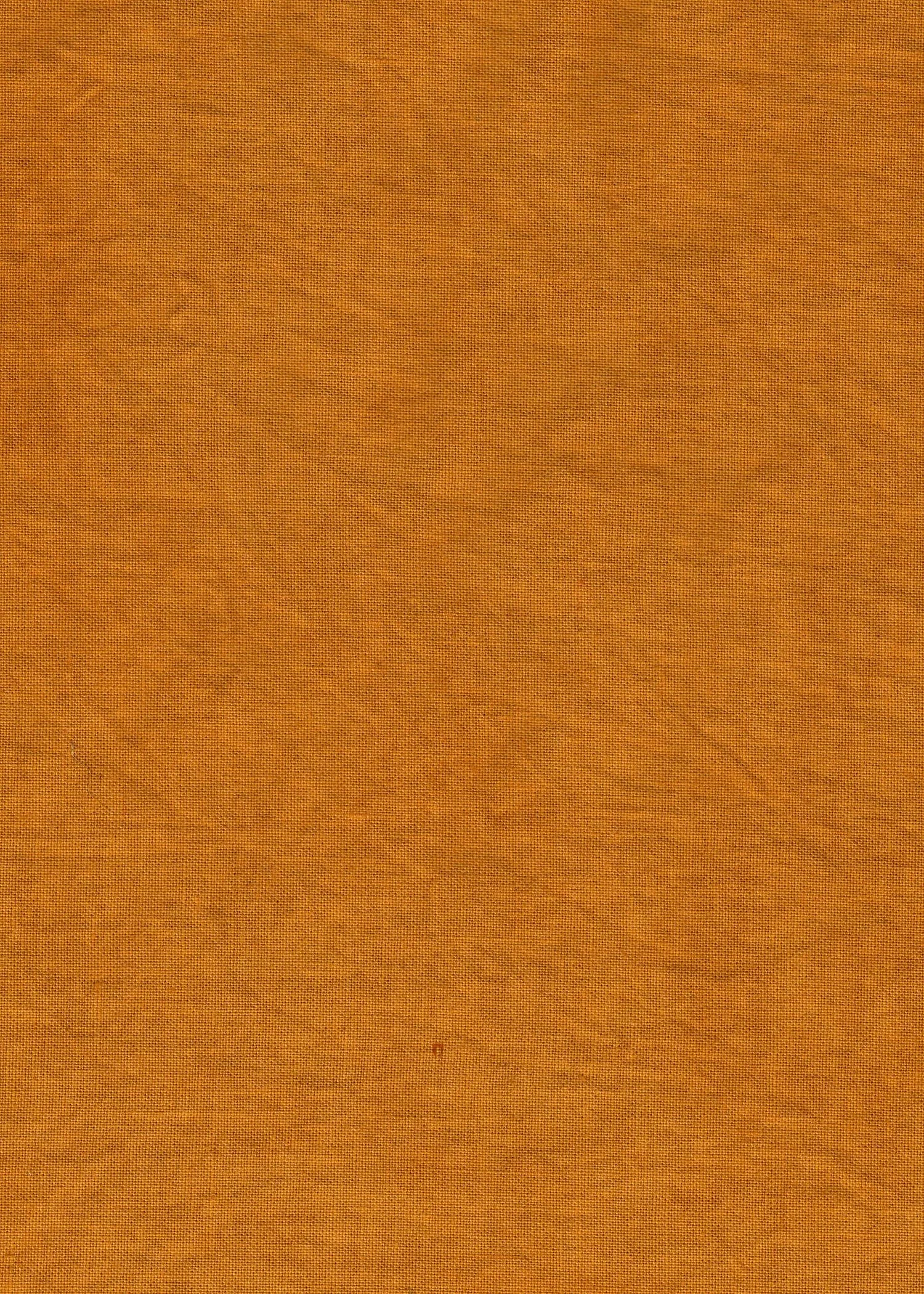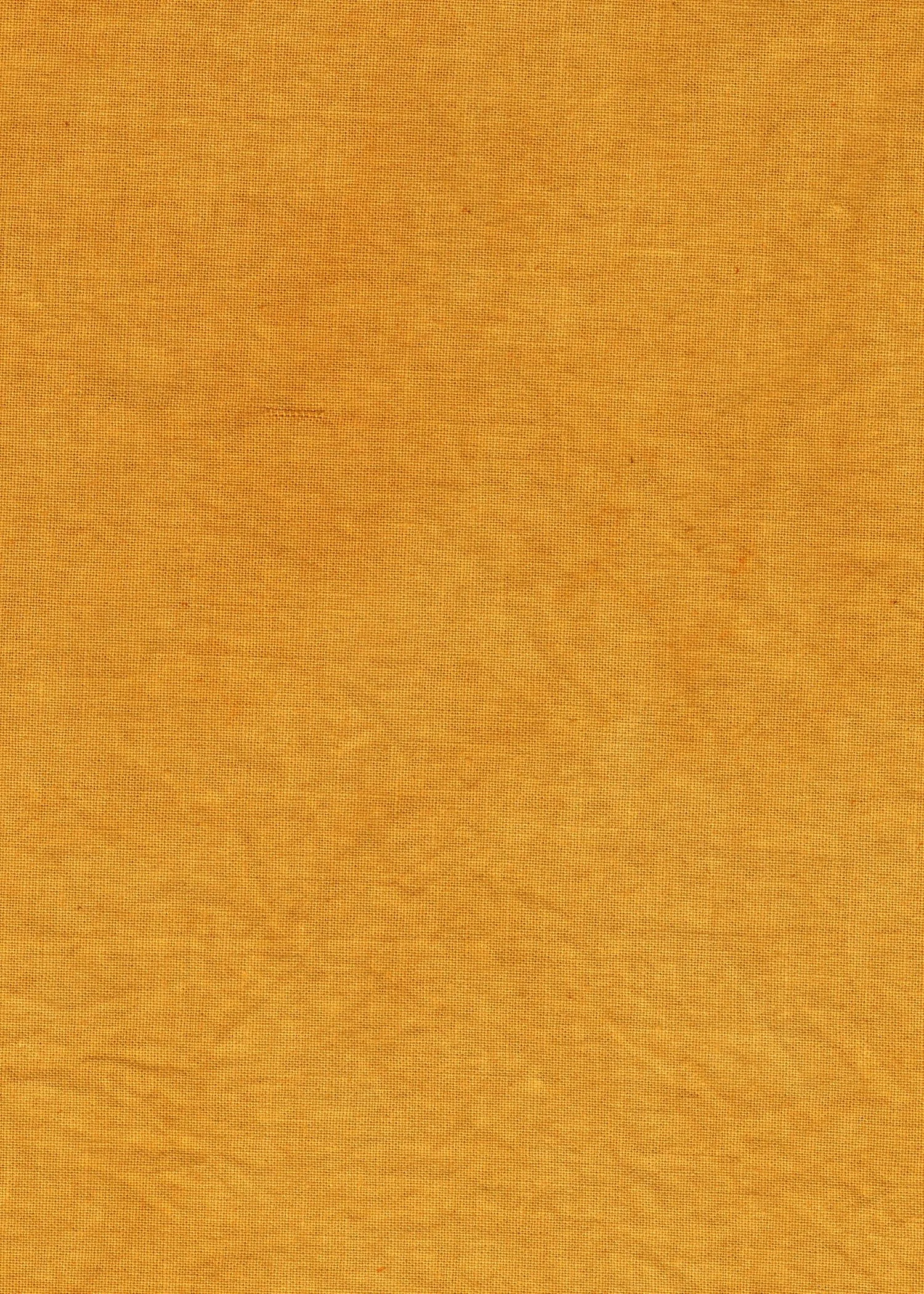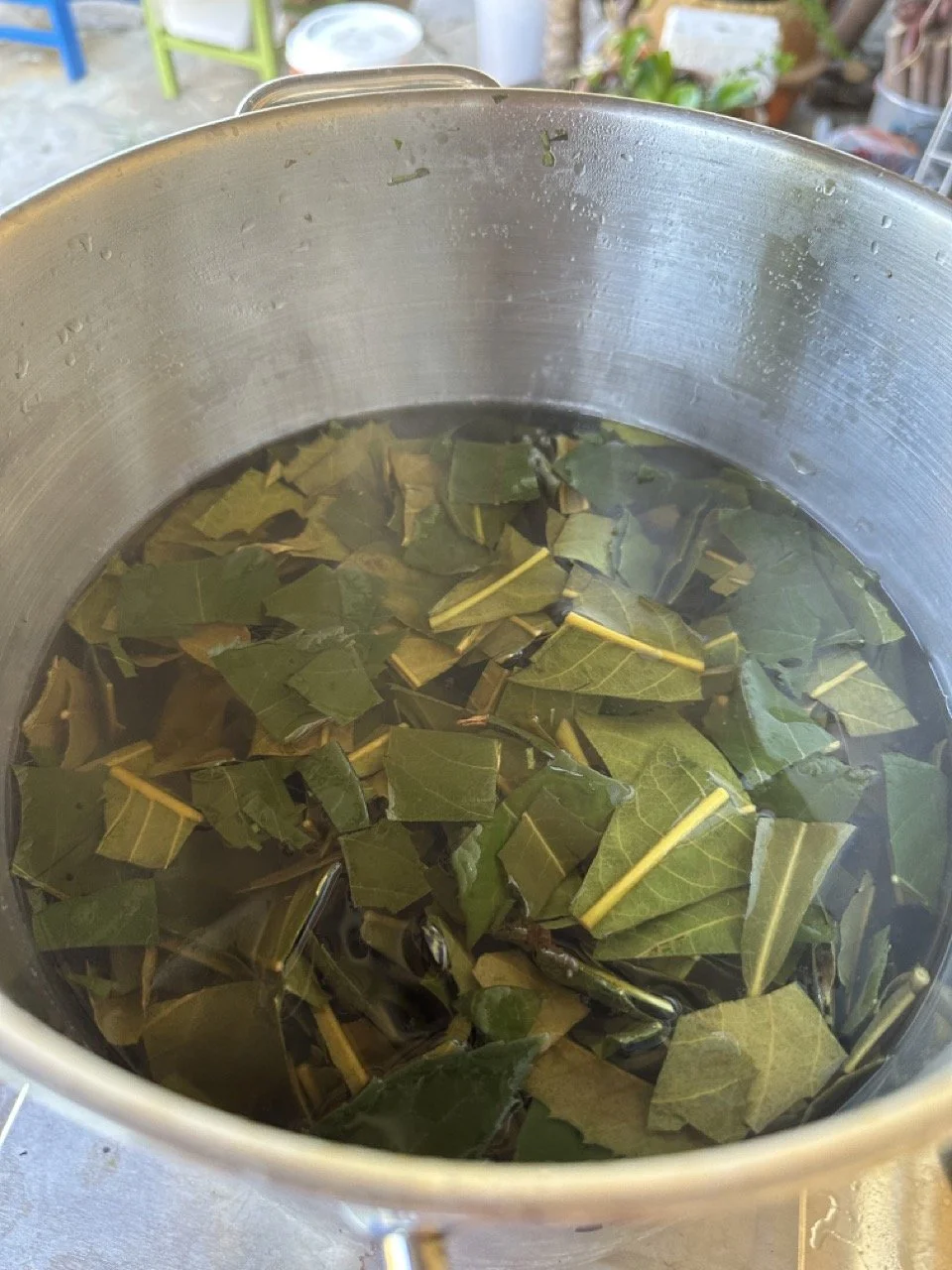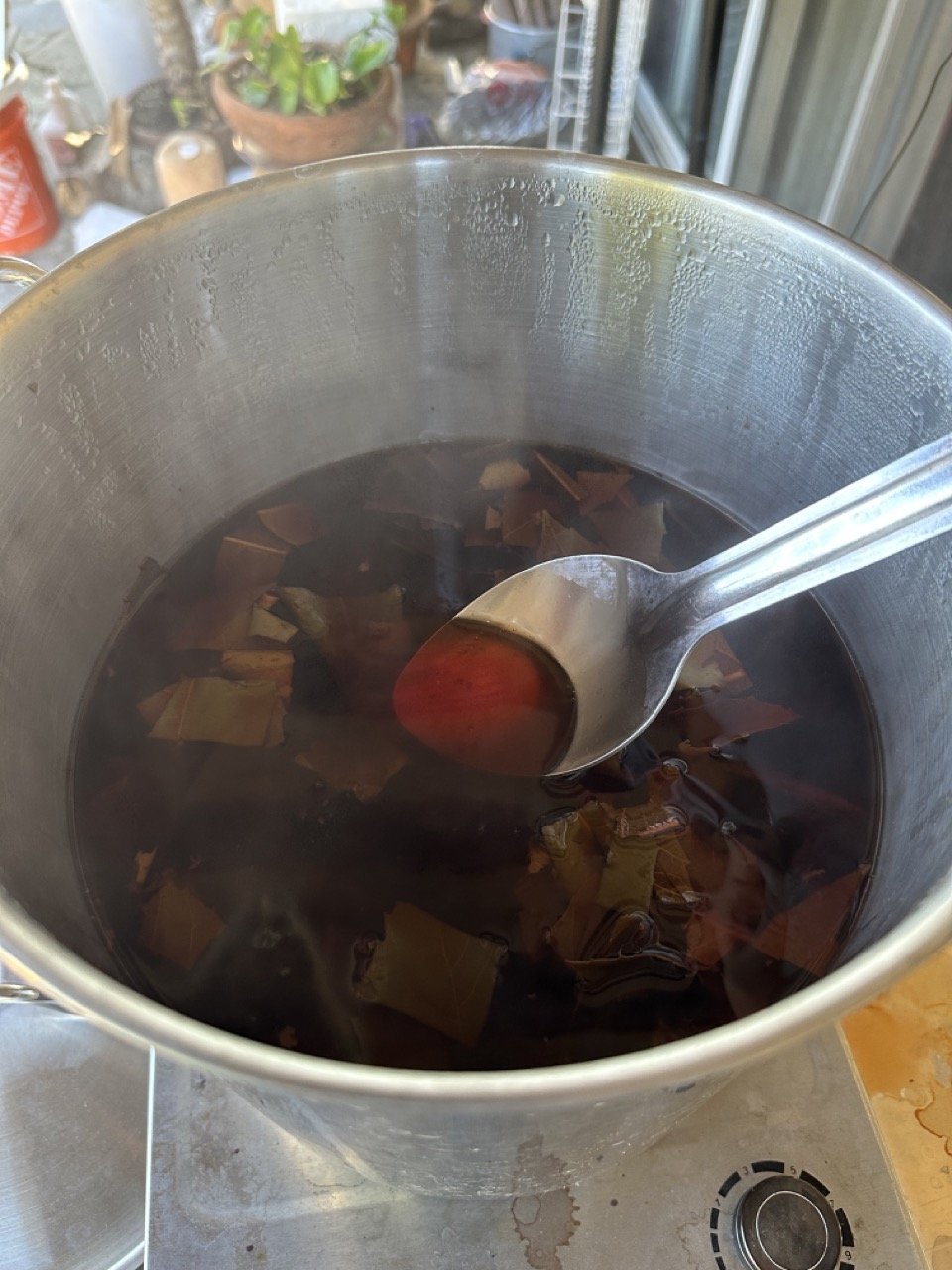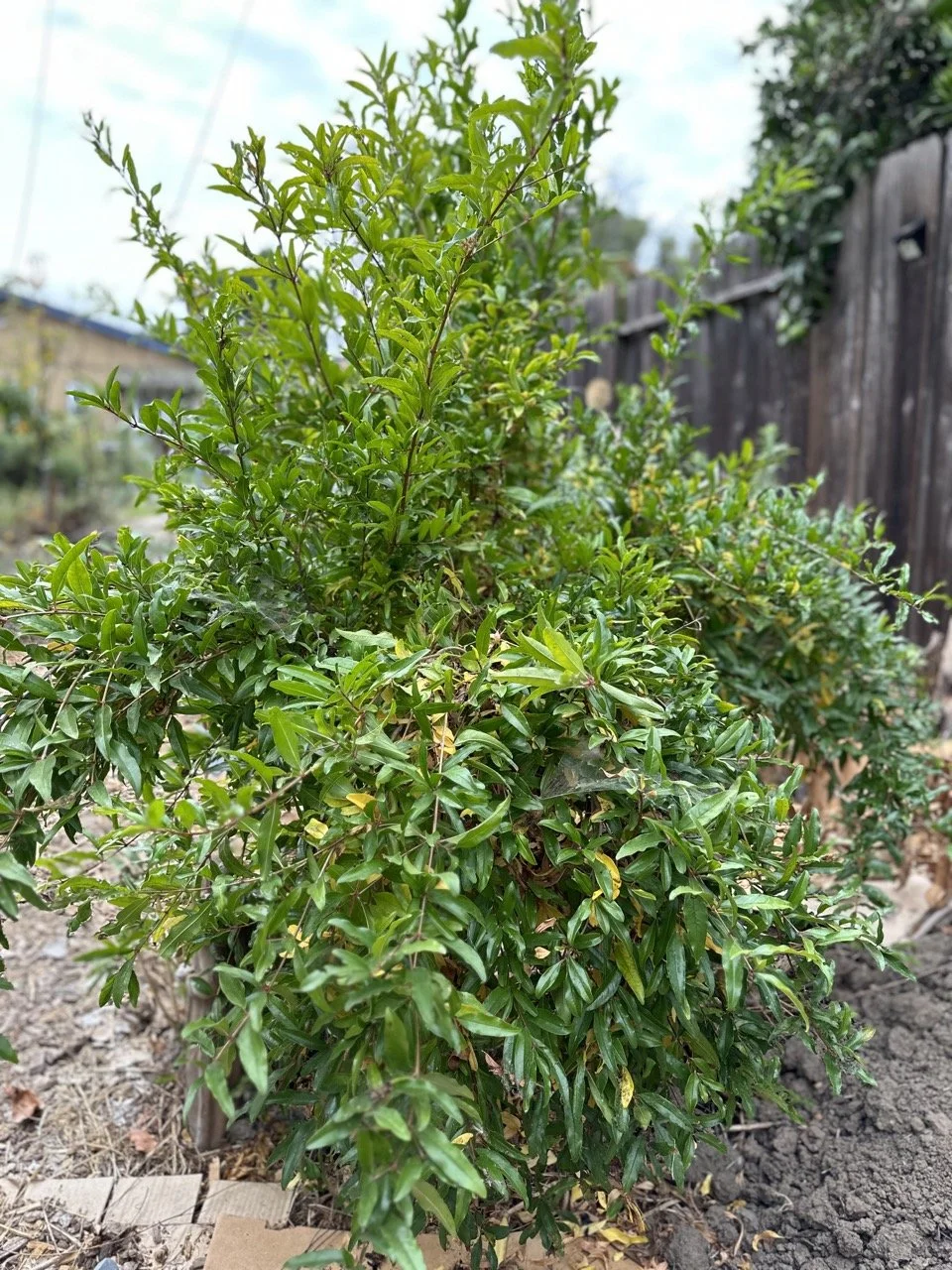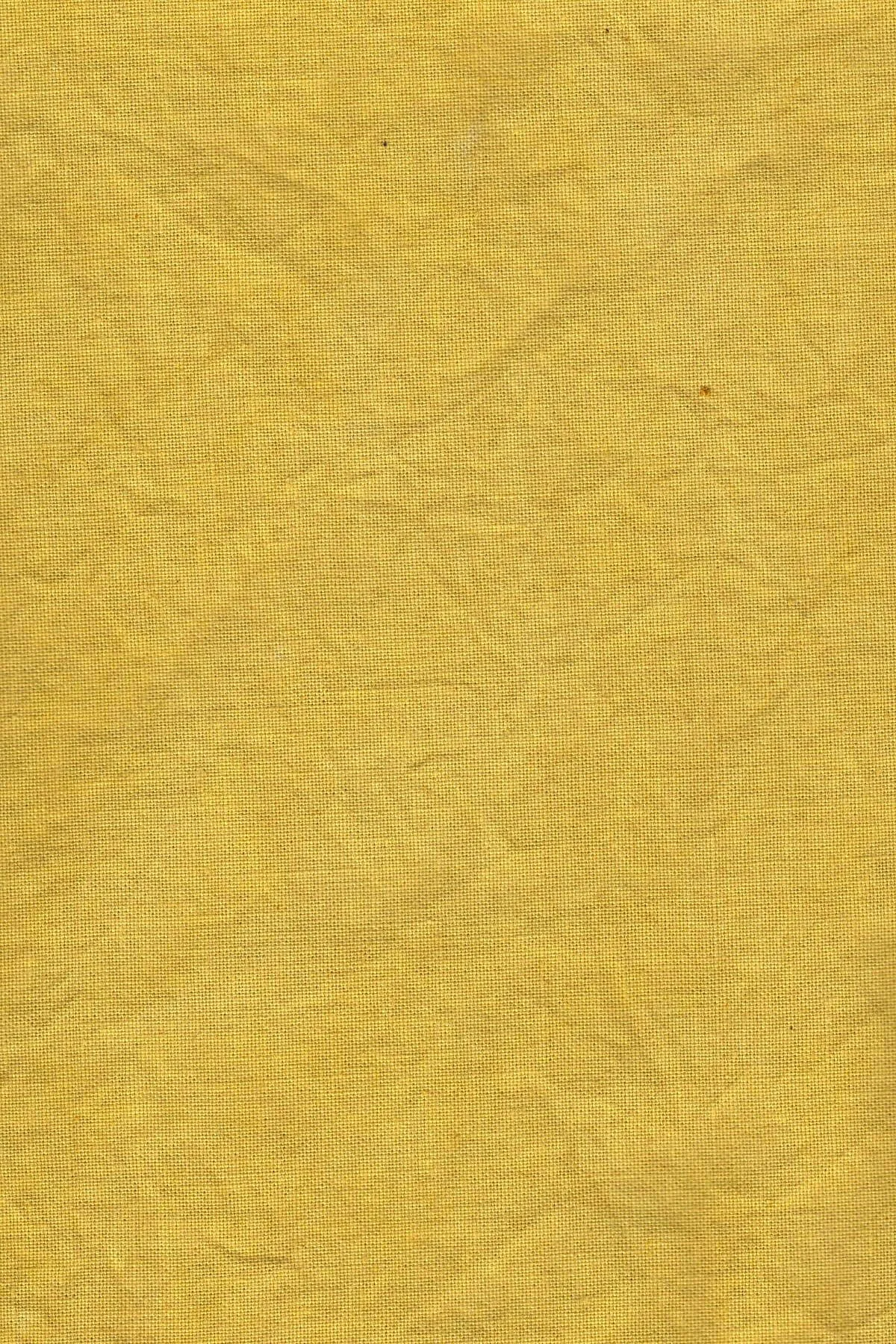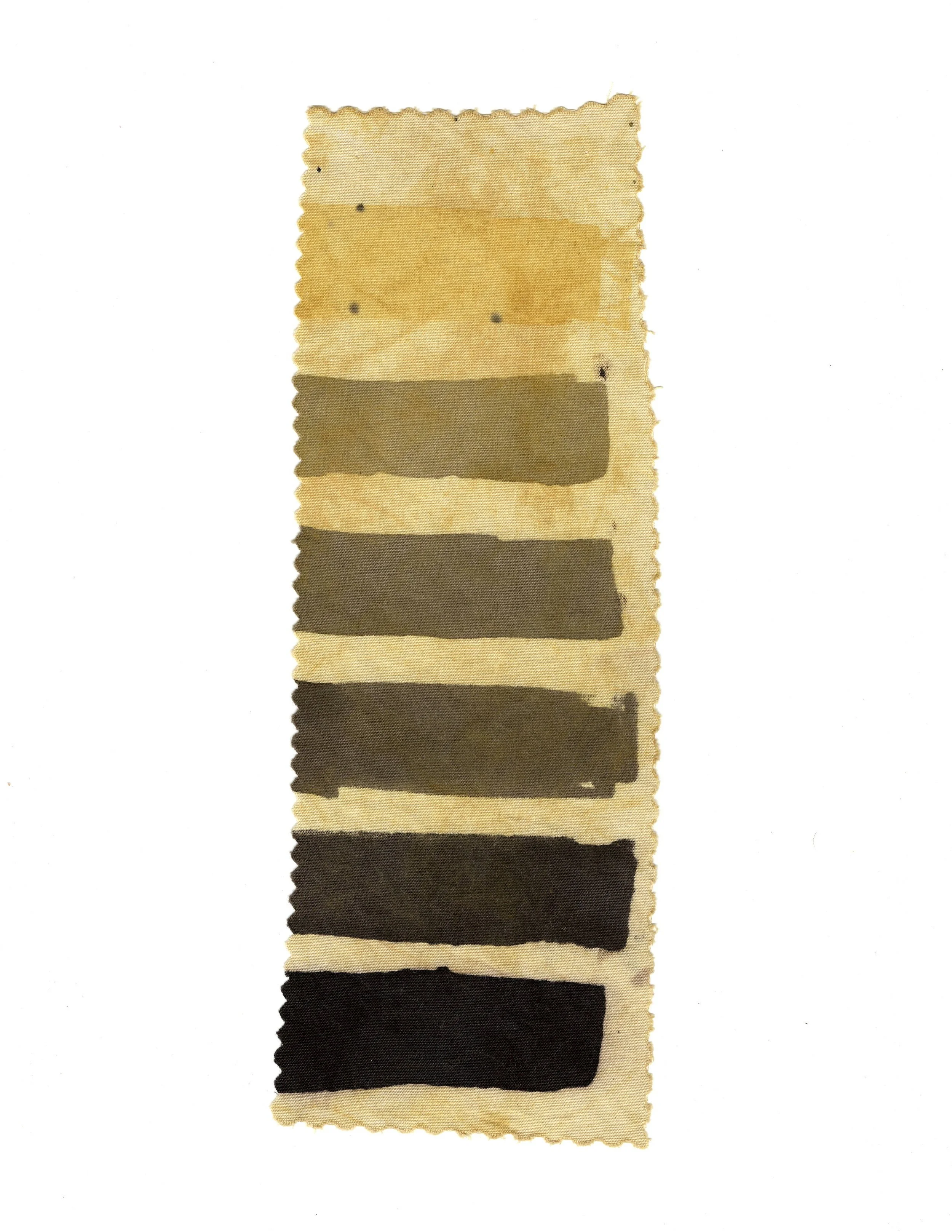Will it dye? Marigold, loquat, pomegranate, fresh leaf indigo
My dye garden is wrapping up for the season. It’s time to use the materials I harvested this spring and summer.
I’ve also been experimenting with other plants in my yard and the surrounding area. So I created a mini-series called Will it dye? to share my findings. For more information about the project and details about my fabric preparation and dyeing methods, see Experiments in Natural Dyeing.
Dried Yellow Marigold
Marigolds are one of the 6 plants I grew in my dye garden this spring. I don’t know what species these are. The seeds arrived from Fibershed in a tiny manila envelope with “marigold” handwritten on the front. Most of them were orange but I had a few yellow plants as well. This first test focuses on the yellow flowers.
The marigolds were harvested earlier this summer at full bloom and air-dried. I dyed combed cotton at 50% WOF and added a mordant test strip. After my initial dye session, I dyed another piece of combed cotton, approximately the same size, to exhaust the color.
(Note: I have some extra dried marigold flowers available in my store at fibercuriousclub.etsy.com! Use the code WILLITDYE for free standard shipping on orders over $30.)
Fresh Loquat Leaves
My partner started several loquat plants from seed ~ 8 years ago. (His parents have a few trees in their backyard.) He planted them in our backyard and they grew huge! One of them fruited for the first time this summer.
He recently pruned them. I took advantage of that opportunity, stripping the leaves from the cut branches, washing and chopping them, and added them to a dye pot.
I read that loquat leaves benefit from a long extraction, so I decided to experiment with that. I heated the pot to a boil, then turned off the burner, keeping the pot on the plate. I repeated the process the next day, this time adding a strip of fabric to cook for an hour to test the extraction. I did this for two more days.
The dye bath color shifted dramatically from Day 0 (the initial heating) to Day 3. It started as a light yellow and became a dark red-orange!
The samples (combed cotton) also get notably darker each day. On Day 3, the bath was dark enough for me to dye my actual fabric and I threw in a mordant test strip as well.
Fresh Pomegranate Rind
We have two small pomegranate trees in our yard… and got only one fruit this year! By the time we discovered it, it was partially mushy and not edible. However, the rind was still good for dyeing, although I had to rescue it from the worm bin where it was accidentally disposed of.
I dyed combed cotton and threw in a mordant test strip. I did an exhaust bath dye with another piece of combed cotton the same size.
Fresh Leaf Indigo + Salt
I grew indigo (persicaria tinctoria) from seed this year – not nearly enough to create my own pigment for a reduction vat, but certainly enough to play with fresh leaf indigo dyeing. I read that fresh leaf indigo works well on protein fibers but not cellulose. So I experimented with different fabric preparations to see what colors I could get on cotton.
All fibers were dyed with the salt rub method. I used this blog post and video as a resource.
I tried four different fabric preparations, all on combed cotton, and got a slightly different color for each one.
For the first sample, I used fabric that had been pre tannined and mordanted (my usual preparation of gallnut and alum/soda ash). It was kneaded with leaves for ~30 minutes.
The second sample had the same tannin/mordant preparation, but I also soaked it in fresh soy milk for one hour (recipe from John Marshall’s book, Singing the Blues).
The third sample was soaked in soya for one hour (no tannin/mordant). Samples 1, 2, and 3 were all dyed at the same time.
This final sample was only dipped in fresh soya until saturated (a few minutes tops). This is not an apples-to-apples comparison with the other three. It had a separate kneading of shorter duration and fewer leaves.
It’s interesting how the tannin/mordant prep looks more green and soya more blue!
Year of Stories recent read: Cræft: An Inquiry into the Origins and True Meaning of Traditional Crafts by Alexander Langlands
